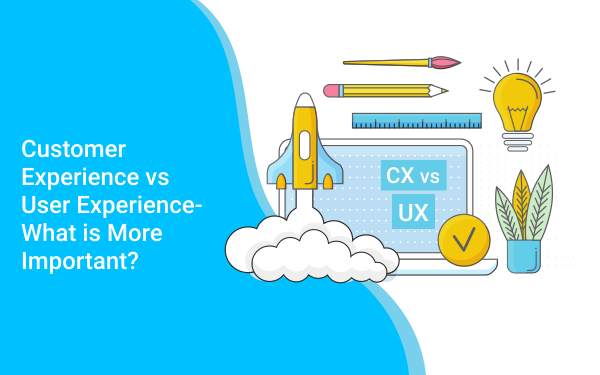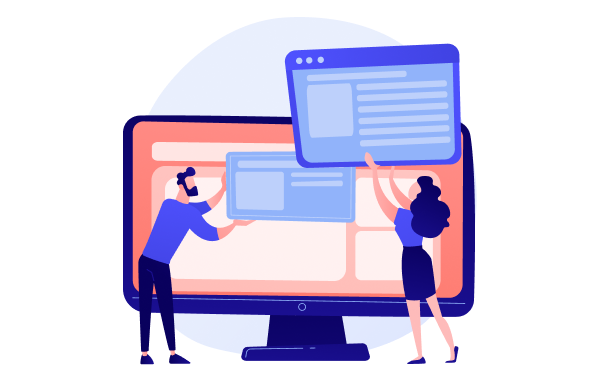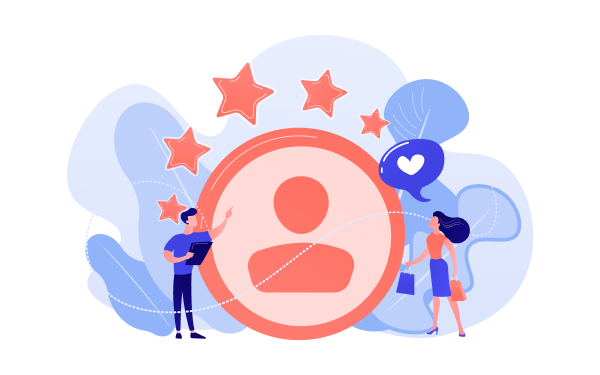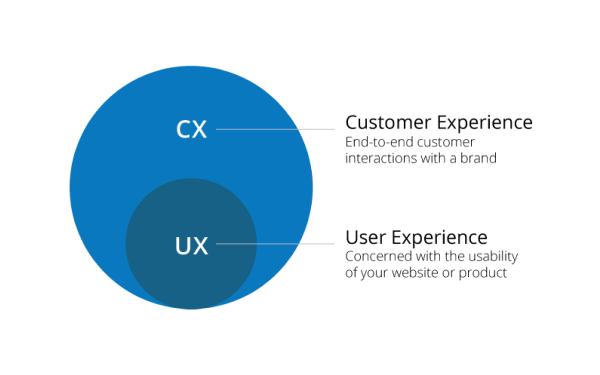Customer Experience (CX) vs User Experience (UX) - What is more important?
We will explain the clear difference between user experience and customer experience. To understand the concept of customer experience, let's first dig deeper into the user vs customer conflict.

User Experience is the crazy word that has revolutionized today’s online interaction. When you closely look at the crucial parameters of designing, UI/UX prototyping is focused on creating an experience to delight the user.
Interestingly, there’s a new thing that has appeared in the business world today, which pays you nearly 4.5 times more. It has also been observed that companies that are providing great customer experience have expanded five times than those that don’t.
Seems exciting?
We too are excited to break down the new theory of customer experience and how it can impact your business growth.
Also, many designers and marketers in the digital sphere use these two words interchangeably that creates confusion. We will explain the clear difference between user experience and customer experience. But before jumping onto the main topic, let us understand the difference between a user and a customer.
Let’s begin!
What is the distinction between user and customer?
We all have read about user experience, but to understand the concept of customer experience, let’s first dig deeper into the user vs customer conflict. A customer is a purchaser while a user is an actual person using the software. In consumer software, a user and a customer are the same people. However, in software as a service (SaaS) they both are different people.
The customer is the decision-making unit that determines whether to make a purchase or not. And, a user is the end user that interacts with the software. Now, this could create an issue when it comes to delivering an experience to two different people.
Supposedly, your company builds travel apps and your customer wants to increase the conversion through the app. If the customers of the travel agency are not satisfied, chances are they will not make any bookings for the travel. The reason could be dissatisfaction due to bad services, or messy user interface, or wrong information provided with the app.
Here the customer is the travel agency and the user is the end-user who is using the services of the app i.e. the customers of the travel agency.
Now, let’s understand user experience and the customer experience in detail.
What is User Experience?

User experience is specific to the product you are selling, but it majorly deals with people that interact with the software. The crucial parameters it considers to monitor user experience include the following:
- Success rate - Percentage of users who complete the targeted stage you want to achieve.
- Error rate - Number of mistakes a user makes while it completes specific tasks.
- Task time - The amount of time a user is taking to complete a specific task.
- Clicks to completion - The number of clicks a user does before the completion of the task.
- Abandonment rate - The percentage of users who don’t complete the task and abandon it.
Here the goal of UI/UX prototyping and final designing is to make sure that the software or website designed efficiently solves the issue.
What is Customer Experience?

Customer experience is a larger concept that considers the interaction of the user/customer with your brand. It covers multiple touchpoints that include social media channels, marketing, sales, pricing, product, customer service, and support. Thus, you can call customer experience an umbrella term that includes all touchpoints. Not just the usability or functionality of the app, but it is more concerned with the perception of customers while interacting with your services.
Here are the important metrics include the following:
- Overall satisfaction- It includes everything right from the interaction and functionality to service and perception.
- Net Promoter Score- NPS is the readiness of the customer to recommend your company.
- Loyalty- Loyalty relates to the likelihood that the customer will continue using your services and products.
Here the goal of UI/UX prototyping and designing is to align the business strategy with customer satisfaction.
Difference between customer experience and user experience?
Is UX and CX the same?
This is the normal inquiry that strikes in mind. According to the definitions given in the above section, you might have a slight idea that both the terms are different. However, it also depends on the industry. In this blog, we are primarily talking about the SaaS industry. Now, it’s time to get into the details as to what is the basis of difference apart from the metrics mentioned in the above section.
Is UX the part of CX?
Yes, UX is part of CX as customer experience is a broader term not confined to functionality and usability of the product or service. Here are the outstanding contrasts between the two:
- CX is primarily concerned with marketing while UX is concerned with technicalities, designing, and the psychology of users.
- CX includes advertising, boosting customer service, and establishing the relationship with the customers. On the other hand, UX includes activities like creating personas to encapsulate user behavior patterns, analysis, brainstorming and research of the users, and more.
- CX aims to improve the overall satisfaction of the customers while UX is more focused on improving the usability of an app, software, or website.
- CX covers service-related industries such as hospitality, retail, SaaS whereas UX covers digital products.
- CX emphasizes customer perception about the brand while UX emphasizes customer interaction, behavior, and enables customer retention.
Why Does the Difference Matter?
Let’s find out through some simple examples:
1) Bad UX, But Good CX
Supposedly, you bought an app that edits videos and images owing to its excellent features. But, the issues came when you actually started using the app and you found the interface confusing.
You contacted the customer support service and got a prompt reply. The support team explained each step clearly and gave you a free credit of $50.
This is what makes a good customer experience and bad user experience.
2) Good UX, But Bad CX
Supposedly, you downloaded a healthcare app as you found it easier to browse and book appointments. As you started browsing the app, the intuitive user interface, easy navigation, and fast loading helped you book an appointment quickly.
However, when you reached the clinic, it was a different story. You realize the premises are understaffed, there is no helpdesk, and the services offered are also not satisfactory.
Now, if you think, what is a good user experience? Then, the above example is the typical case of a good user experience, but a bad customer experience.
If you closely look at both the examples, one aspect of the brand from where you are getting the app satisfies you, but the other area keeps you dissatisfied. So, no matter how good the UX or CX is, if you are not consistent with the overall brand experience, you may fail. And, to provide the best overall experience, UX and CX must work together.
Let’s see how?
How do UX and CX work together?

We understood from the above example that UX and CX must work together to create a lasting and profitable relationship. Here are a few ways you can make UX and CX work together:
Allow Customer Feedback
Allow your customers to offer their feedback, so you can find the loopholes and work on the weak areas to improve the product and service. Use as many tools as you can and let them reach out to you through various mediums. It may include email, live chats, phone, or social media.
Personalize the Apps or Websites
Personalization relates to the content creation part that addresses customer queries and fits their needs. The best example of personalization is the “recommended for you” section in the Amazon app. Analyze the search pattern of the customer/user and create a section dedicated to their needs.
Communicate on a Common Platform
Communication is the key when it comes to improving UX and CX. When people reach out to the brand, the brands don’t communicate with the customer/user directly. Your customers would make every possible attempt to reach out to you and it would be difficult to interact with them on every platform. Make sure you have a dedicated platform to resolve customer issues and address their concerns.
Work on Marketing
You have to understand that UX begins before a customer clicks on your website link that lays the foundation of a good customer experience. If your customers/users have a hard time finding you online, work on your online marketing. Make sure you create easy content in a language that your customers can resonate with. Only, then they will find you easily on the internet.
What to Prioritize in UI/UX Prototyping?
UX and CX are both different areas and making a transition from one to the other are challenging. So, it is crucial to make them work together. The best way is to focus on customer needs in a way that automatically improves the user experience. Especially if you are from the SaaS industry, focusing on customers can help you identify the issues. And, focusing on users would give you the exact way to solve the issue.
Conclusively, we can say that try to please both groups, the customers, and users that will create a win-win situation for you.
Author Bio:
Sidharth Jain, Proud Founder of Graffersid, Web and Mobile App Development Company based in India. Graffersid has a team of designers and dedicated developers. Hire Reactjs Developers, Trusted by start-ups in YC, Harvard, Google Incubation, BluChilli. He understands how to solve problems using technology and contributes his knowledge to the leading blogging sites.


